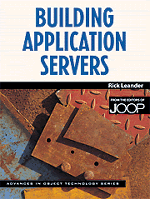Chapter 1 - What Is an Application Server and Why Do I Need One?
from PART 1 - ARCHITECTURE
Published online by Cambridge University Press: 06 July 2010
Summary
Over the past year or so, quite a few software vendors have released packages they call application servers. Inprise, Oracle, BEA, and a number of others all have jumped onto the application server bandwagon, extending their product lines with products that target enterprise computing. So, what exactly is an application server?
This chapter will explore the reasons why application server technology will play an important role in the next generation of enterprise computing. Topics include:
Two-tiered vs. multi-tiered computing
Why I chose multi-tiered client/server
What can an application server do?
Costs and disadvantages of application servers
Moving from traditional client/server to n-tier computing
Two-Tiered vs. Multi-Tiered Computing
There are quite a few advantages to traditional two-tiered client/server. The database products are very mature with heavy competition to constantly improve performance and features. Client-side development tools like Microsoft Access, Borland Delphi, and C++ Builder have become so easy to use that much of the code writes itself. Even the networks are easier to install and maintain.
But as most client/server developers soon discover, it is almost too easy. New applications multiply on the server and, with the constantly plunging price of computers, more clients keep coming on board. In no time at all, the server is overloaded. Even after all of the memory slots have been filled, more CPUs have been added, and thousands of dollars have been spent to upgrade the network, the users still complain that response time is too slow.
- Type
- Chapter
- Information
- Building Application Servers , pp. 3 - 14Publisher: Cambridge University PressPrint publication year: 2000



